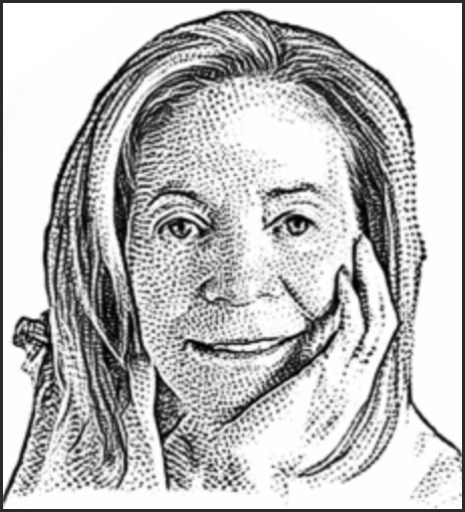This column was inspired by the results of the recent democratic election in Mexico. The outcome of the election was not surprising, given that the candidate Claudia Sheinbaum is a protégée of the outgoing and highly popular president, Andrés Manuel López Obrador. However, it did represent the first time in the country’s two hundred years of independence, a period during which it has had sixty presidents, that a woman has been elected to the presidency. Of the three largest North American countries (out of a total of 23), Mexico is the second to elect a woman as leader. Canada elected Kim Campbell in 1993 for a short-lived term of but a few months. As we all know, the United States has yet to elect a women as president.
Flashback! I was a senior in high school when Indira Gandhi became President of India in 1966. I discovered that information not from a television report or from reading the newspaper. Those sources of information were “out of bounds” for me in the tightly controlled community in which I was being raised. However, there was a large cork bulletin board on the wall in the “history room” of our tiny school that displayed current newspaper clippings on matters of national and international politics and government. Information was updated on a regular basis. Each article was meticulously trimmed, with only the date and the wording visible, so that no “errant” news could be gleaned from the posted articles. Elections, whether in the U.S. or across the globe, fascinated me—they were a peek into the “real” lives of people who were “out in the world.” Reading about the inauguration of President Johnson in 1965, and then the election of Charles de Gaulle made me feel a part of the world I so wanted to know and comprehend.
Three years later, I was in my own apartment and watching my own TV, when I learned that Golda Meir had assumed the role of prime minister of Israel. A year later Sirimavo Bandaranaike won reelection in Sri Lanka. By the time Isabel Peron came to power in Argentina in 1974, I was wondering why so many of the women leaders in the world (OK – there were only still a handful) were elected in countries that were far from industrial powerhouses. Weren’t developing countries mostly dominated by men? Why would poor and, in many cases the uneducated citizens, select a woman to be their country’s leader? What did they see in her? I was still puzzling that concept when, in 1979, Margaret Thatcher blew onto the world stage with a decided victory over the Labor party and was elected prime minister of the U.K. While not a developing country, Britain was in dire economic straits at the time, and Mrs. Thatcher earned the moniker “The Iron Lady” for her hard charging, take-no-prisoners approach to problem solving—be it inflation, a crumbling manufacturing sector or a war with Argentina. As Corazon Aquino—in the Philippines—and then Benazir Bhutto—in Pakistan—assumed power in the 1980s, women were visibly leading some of the world’s most populous nations, the vast majority of them developing countries. In the U.S., it wasn’t until 1984 that a woman was even considered to be a running mate in the presidential elections. That was the year that Walter Mondale chose Geraldine Ferraro as his Vice Presidential candidate. In the history of American presidential voting, there was never a greater defeat for a presidential candidate. Most assuredly, it was not Geraldine Ferraro’s fault in any way, but one is left to wonder if her being on the ticket was enough to cause some voters to vote for Reagan. Could it have been that Americans simply weren’t ready to accept a woman even as only “second in line”? Maybe the good news is that now, some forty years later, we do have a woman as Vice President.
Then, THE WALL came down. That monumental event in 1989 was pivotal in changing the political and economic course of fifteen Soviet Republics and an additional eight satellite states in what is today central and eastern Europe. Nearly twenty-five countries that had been under the thumb of the authoritarian regime of the Soviet Union became overnight a part of the world community of nations that hold free and democratic elections. In that year, 1989, the sum total of women heads of state numbered five. A quarter of a century later, that figure had grown to seventeen—still a small portion of the 195 countries in the world, but a giant step forward. The United States was still not on that list. However, a year later, Hilary Clinton, the Democratic Party candidate in the 2016 election, did indeed win the popular vote in this country—by a total of nearly three million votes. Despite that impressive margin, for only the fourth time in U.S. presidential voting history, the electoral college vote majority went to her male opponent. It will now be at least another four years before there will be a chance for a woman to be the candidate for President from either party.
My youthful observation that women who became heads of government were elected mostly by citizens of countries that were mired in economic and social crises has vastly changed in the last thirty-five years. It is Europe today that leads the world in terms of women at the helm of government. Take, for example, the Baltic countries—Lithuania, Latvia and Estonia. Each is currently headed by a woman. All three countries have been members of NATO since 2004; each has a lower deficit to GDP ratio than does the U.S. and each more than meets its full allotment of defense spending as required by NATO.
Today, out of 195 countries in the world, 27 have women who serve either as Head of State or Government—five in Asia, two in South America, five in Africa, two in the Caribbean (technically in North America) and the remaining thirteen in Europe, the preponderance of which are in the reclaimed countries of the Soviet Union. When Claudia Sheinbaum is sworn into office on October 1, there will, for only the second time, be a woman leading a major North American country. Fortunately, the legislative branch of our government has done a far better job—women currently fill 29% and 25% of the seats in the House and the Senate, respectively. And while those levels are far below the 40% in the European Parliament, they are double what they were a quarter of a century ago. That is progress, for sure, but in a world where the accepted rule of thumb is that technological change, in the form of computer power and speed, doubles every two years, that is slow progress. It’s high time we picked up the speed with which we embrace women in the leadership of government.
Patricia Chadwick is a businesswoman and an author. Her second memoir, Breaking Glass, with the subtitle: Tales from the Witch of Wall Street, is on sale now. It tells of her “growing up” and succeeding in what was then the all-male bastion called Wall Street. Her new book is a sequel to her first Memoir, Little Sister, the story of her childhood in a religious community-turned-cult. www.patriciachadwick.com




